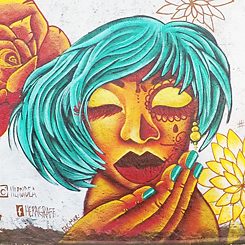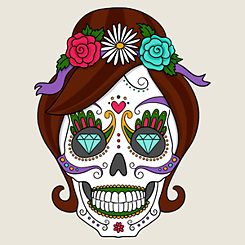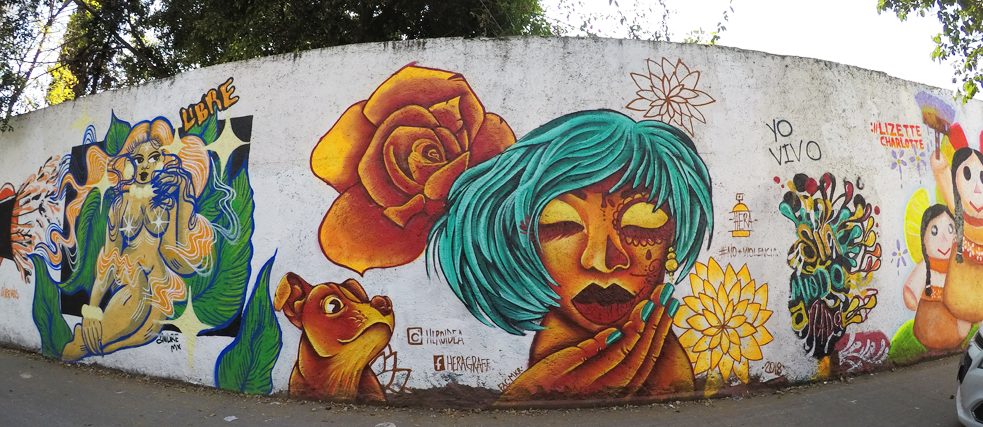"No Más Violencia" by Heragraff
Die mexikanische Künstlerin Heragraff, die mit bürgerlichem Namen Jaqueline heißt, ist seit 2007 in der Street Art-Szene unterwegs. Mit ihrer Kunst macht sie auf Probleme aufmerksam, die Frauen in Lateinamerika erleben. In "No Más Violencia" hat sie eine Frau mit lateinamerikanischen Gesichtzügen dargestellt. Während sie die eine Hälfte des Gesichtes neutral gestaltet hat, möchte Heragraff mit der bemalten Hälfte an Catrina, ein Symbol für die mexikanische Kultur, aber auch für den Tod, erinnern. "Ich sage also nicht ausdrücklich, dass sie eine tote Frau ist, aber wenn die Gewalt anhält, wird sie natürlich im nächsten Jahr keine normale Frau mehr sein, sie wird eine Catrina auf dem Altar ihrer Familie sein", erklärt Heragraff.
Die UN macht jedes Jahr an 16 Tagen zwischen dem 25. November (Internationaler Tag zur Beendigung der Gewalt gegen Frauen) und dem 10. Dezember (Tag der Menschenrechte) weltweit auf das Tema Gewalt gegen Mädchen und Frauen aufmerksam, um ihr ein Ende zu setzen. Die Kampagne Orange the World oder Pinta el Mundo de Naranja des Generalsekretärs der Vereinten Nationen wird seit 2008 von UN Women durchgeführt.
 "No Más Violencia" by Heragraff
| © Heragraff, photo: Lucia Romero
"No Más Violencia" by Heragraff
| © Heragraff, photo: Lucia Romero
Im Rahmen dessen bemalte die mexikanische Künstlerin Heragraff auf Initiative des Museo del Juguete Antiguo México (“Antikes Spielzeugmuseum Mexiko”, kurz MUJAM, #StreetArtMujam) zusammen mit 12 anderen Frauen eine Wand im Viertel Doctores von Mexiko-Stadt.
 La Calavera Catrina
| © Sofia Cristina Córdova Valladares on Pixabay
La Calavera Catrina
La Calavera Catrina
| © Sofia Cristina Córdova Valladares on Pixabay
La Calavera Catrina
(„Adrettes Skelett“ oder „Eleganter Schädel“) oder Catrina La Calavera Garbancera ist eine Zinkätzung des mexikanischen Druckers, Cartoon-Illustrators und Lithographen José Guadalupe Posada aus den Jahren 1910-1913. Sie wird als satirisches Porträt jener mexikanischer Ureinwohner angeboten, die - zumindest empfand es Posada so - in der Vorrevolutionsphase danach strebten, europäische aristokratische Traditionen zu übernehmen. La Catrina ist zu einer Ikone des mexikanischen Día de Muertos (Tag der Toten) geworden.
LINKS
» Orange the World» Violence Against Women - Facts everyone should know
» #HearMeToo stories from Latin America and the Caribbean
» Facebook von Heragraff
» Instagram von Heragraff
